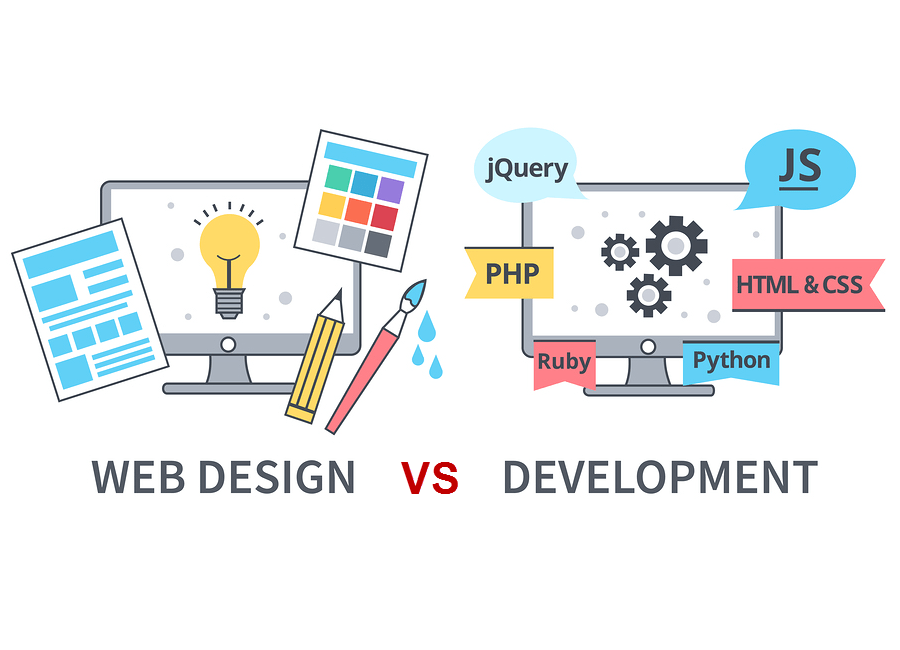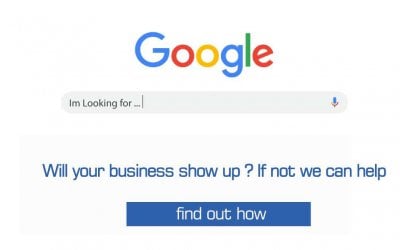What Do Website Design Companies Do?
What does website design include?
What do Web designers create?
How does Web design help companies?
Website Design companies follow a structured process whereby the website projects they take on. Web Design Companies also extend their services as a digital agency that focuses more on the end deliverables and also learning of the brand or strategy to arrive at the best design focus. Focused on a custom, premium experience laced with questions, research, and deliverables along the way.
A Digital Agency aims to be experts along the spectrum from design to development to marketing. Web Design Companies are able to better specialize in specific industries and generate templates or guidelines for future clients within those industries. The standard of a designer or developer in an agency is typically higher than other types of companies they solve complex problems and simplify it within design or development for the betterment of the business.
In many ways, web design goes hand in hand with marketing. Many experienced marketers frequently discuss how important it is, how much it costs, where to get it…these are all pertinent topics and questions. But few people actually take the time to explain exactly what web design involves.
We think the best way to approach the question of “what” is to outline what web designers do over the course of a project.
On this page, we’ll cover everything that goes into a web design project, so you know exactly what you’re paying for the next you want to hire a web design company for your business.
At the very core of a website design companies services are 3 things:
-
Ongoing Website Maintenance
-
Website Design and Development
-
Hosting
Whether you’re looking for a website design company in East London, New Perspective Design has you covered.
Related Services that website design companies offer:
-
Logo Design
-
Graphic Design
-
Search Engine Optimization (SEO)
-
Social Media Management
-
Digital Marketing
-
Brand Exposure
-
Website Design and Development:
A website design company offer design of websites that are displayed on the internet. It usually refers to the user experience aspects of website development rather than software development. Web design used to be focused on designing websites for desktop browsers; however, since the mid-2010s, design for mobile and tablet browsers has become ever-increasingly important.
A web designer in a web design company or agency will work on the appearance, layout, and, in some cases, content of a website. Appearance, for instance, relates to the colors, font, and images used. Layout refers to how information is structured and categorized. A good web design is easy to use, aesthetically pleasing and suits the user group and brand of the website. Many web pages are designed with a focus on simplicity so that no extraneous information and functionality that might distract or confuse users appears. As the keystone of a web designer’s output is a site that wins and fosters the trust of the target audience, removing as many potential points of user frustration as possible is a critical consideration.
Two of the most common methods for designing websites that work well both on desktop and mobile are responsive and adaptive design. In responsive design, content moves dynamically depending on screen size; in adaptive design, the website content is fixed in layout sizes that match common screen sizes. Preserving a layout that is as consistent as possible between devices is crucial to maintaining user trust and engagement.
As responsive design can present difficulties in this regard, designers must be careful in relinquishing control of how their work will appear. If they are responsible for the content as well, while they may need to broaden their skill set, they will enjoy having the advantage of full control of the finished product.
Web development is the building and maintenance of websites; it’s the work that happens behind the scenes to make a website look great, work fast and perform well with a seamless user experience. Web developers, or ‘devs’, do this by using a variety of coding languages. We have listed a few programming languages below.
Programming in HTML, CSS, PHP and JavaScript
These three “languages” are the backbone of most websites and are the three biggest tools in a web designer’s toolbox. They’re all technically “languages,” although HTML and CSS are not technically considered to be true programming languages.
-
HTML
HTML (HyperText Markup Language) is a set of “markup” tags that are responsible for structuring all the various elements of a webpage. It designates headers, footers, paragraphs, links, images, and everything in between. HTML is what search engine crawlers “read” when they index your website.
Proper HTML is critical to a professional, functioning website. HTML mistakes will almost universally result in visual anomalies on a website, apparent even to users. At worst, improper HTML can essentially break an entire website.
-
CSS
You can think of CSS (Cascading Style Sheets) as a supplement to HTML. CSS is responsible for the styling of HTML elements – in other words, CSS controls how website elements look to end-users.
For example, HTML uses the < p > tag to designate paragraphs, or general body text. Using CSS, a designer can make all text designated as a < p > element a certain color, a certain font size, a certain font type, and so on.
CSS can be very simple and accessible in the context of small, static websites, but can quickly grow to thousands of lines of code when dealing with bigger, more complex websites.
-
JavaScript
JavaScript is yet another supplementary language to HTML and CSS. It’s considered fairly easy to learn, as far as programming languages go. JavaScript also straddles the line between web developers and web designer. The reason for this is that javascript can be used to write backend functionalities, it allows the user a way to control visual elements on the website with various functions.
To put it very simply, JavaScript allows for the enhanced manipulation of website elements. HTML and CSS are not necessarily “programming” languages, in that they essentially serve just to structure and style web pages. You can achieve some semblance of functionality with them, like causing an element to change color when it’s hovered over, but JavaScript is required for anything beyond that.
JavaScript gives designers advanced control over the elements of a website. For example, designers can use JavaScript to define that “when the user does X, Y will happen,” where Y is a functional complexity that can’t be handled by simple HTML and CSS.
A very basic usage of JavaScript is something like hiding or showing a certain element when the user clicks a specific button.
There are various implementations or “versions” of JavaScript, with jQuery being the easiest and most common for web designers to learn and utilize.
-
PHP : Hypertext Preprocessor
PHP is the fourth language, although not included in every website it is included in 83% of websites online so it’s worth a mention.
PHP is a backend programming language that can be used for web applications. It can be embedded into HTML. PHP is very useful for developing dynamic websites, which provide dynamic content to users, it can manage databases such as MYSQL and provide very robust custom functionality on websites.
Hosting with a web design company
Some web design companies also take on the role of a hosting provider. Having access to the server upon which website resides to make it easier for designer and developers within the company to make changes to websites backend instead of having to contact a 3rd party service provider.
There are mainly four types of hosting that web design companies offer:
Four types of web hosting services
Web hosting companies range from service providers who offer extensive web management and support to service providers who lease a single private virtual server. Hosting services include:
- Managed Hosting – In managed hosting, the service provider owns and operates servers leased to a customer. The provider is responsible for server management, backup services, software maintenance, security, technical support, and more. Rackspace is an example of a managed hosting provider.
- Cloud Hosting – With cloud hosting, the service provider supplies a private, public or hybrid cloud, and the customer pays for system time and storage. Cloud capacity can be scaled up or down, depending on a customer’s computing needs. Leading cloud hosting providers include Microsoft® and Amazon Web Services®.
- Colocation Facilities – A colocation facility hosts a company’s servers and provides an Internet connection, a power supply, and a climate-controlled environment. Most colocation facilities are owned and operated by a local provider.
- Private Virtual Server – A service provider hosts a customer’s website on its own private virtual server, thereby physically isolating it from the websites of other customers. Managed hosting providers, cloud hosting providers, and colocation facilities all offer private virtual servers.
Ongoing Website Maintenance
Website design companies will often offer website maintenance as an additional service. This is because the web is changing at such a rapid pace, that websites can no longer be expected to sit on a server for years. Programming languages change and depreciate functions which can be problematic for websites, consumers in the market change, and your business and its services or products showcased on the website may also change with time.
With time websites also often are exposed to hacking vulnerable. A good website maintenance plan from a reputable website design company will keep your website updated and secure.
Here is a list of standard services offered by website design companies maintenance plan:
Backups
Perform both automatic and manual backups on a regular schedule. Backups will be used to restore the website if needed.
Popular tools include:
Security
Monitor threats and attacks, and set up security to prevent them. Perform security fixes and restore backups as needed. You could even include SSL certificates.
Popular tools include:
Site Monitoring
Monitor speed issues, 404 errors, broken links, etc. and solve issues or make suggestions about how to solve issues.
Popular tools include:
Analytics
Use high-quality tools to analyze traffic and offer suggestions for content, design, etc. This can also include a/b testing.
Popular tools include:
Consulting
You can help clients grow their business and online presence. You can offer Skype calls, email, meeting in person, talking over the phone, etc., for training and business development.
Marketing
Offer to manage social media, advertising, email and newsletter campaigns, etc., to help grow their online presence.
Content
You could perform updates to their content, such as images, text, and layout changes. Websites need to have their content updated to remain current. You could even provide blog content, handle comments, users, email, etc. You could provide blog articles monthly, weekly, or daily.










